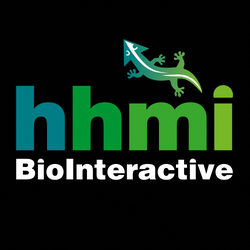Website: http://www.hhmi.org/biointeractive/biomeviewer
What does it help with?
It is an engaging tool that gets students thinking about other places in the world. A handy compare feature allows them to uncover similarities and differences between any two locations on Earth.
What grade and age range?
K-12
Is this core/supplemental/special needs/extracurricular/professional development?
This is a supplemental tool for educators to engage their students in exploring the world around them.
What subject, topic, what standards is it mapped to?
This tool could be used in biology, Earth, and environmental science classes. It has strong connection to cross-cutting concepts within NGSS. For example it integrates ecology, wildlife, climate, and human impact data for the entire globe.
What lesson time does it use?
It’s flexible. A teacher could use it as a quick orientation to a new place/ecosystem or they could assign students to use it as a foundation for a research project.
What is the pricing model?
Free with no in-app purchases or advertising.
What makes BiomeViewer unique?
The integration of the different data layers is what makes BiomeViewer stand out. There are apps describing ecosystems and others that present climate data and still others that deliver biodiversity data – to have them all in one package makes for a powerful tool for discovering patterns and improving understanding about ecosystems.
A description of the characteristics--how is it designed for user interface, user experience? What instructional design principles are at work here?
BiomeViewer has a clean and intuitive interface for interacting with a 3D globe. Some global patterns are more obvious on a flat projection and the app can elegantly transition between globe and flat projections. The app is designed with exploration in mind and users will delight in the discovery of the different layers and search capabilities without everything being explicitly highlighted.
Teacher review:
The BiomeViewer App is an excellent way to engage students to explore the biomes of the world right in the classroom. Students were inspired to ask questions about how components of biomes interact and how human impact on these environments change them. They were most curious about the animals found in various ecosystems and why they were categorized into threat levels. Students explored how two ecosystems with similar biomes could experience different human impacts. Students followed their questions and were able to create and then answer the questions that intrigued them. The BiomeViewer allowed for student-driven lessons that started with questions and led to engagement and exploration.
Laura Dinerman
AP Environmental Science and Honors Biology at Sherwood High School
Sandy Spring, MD










